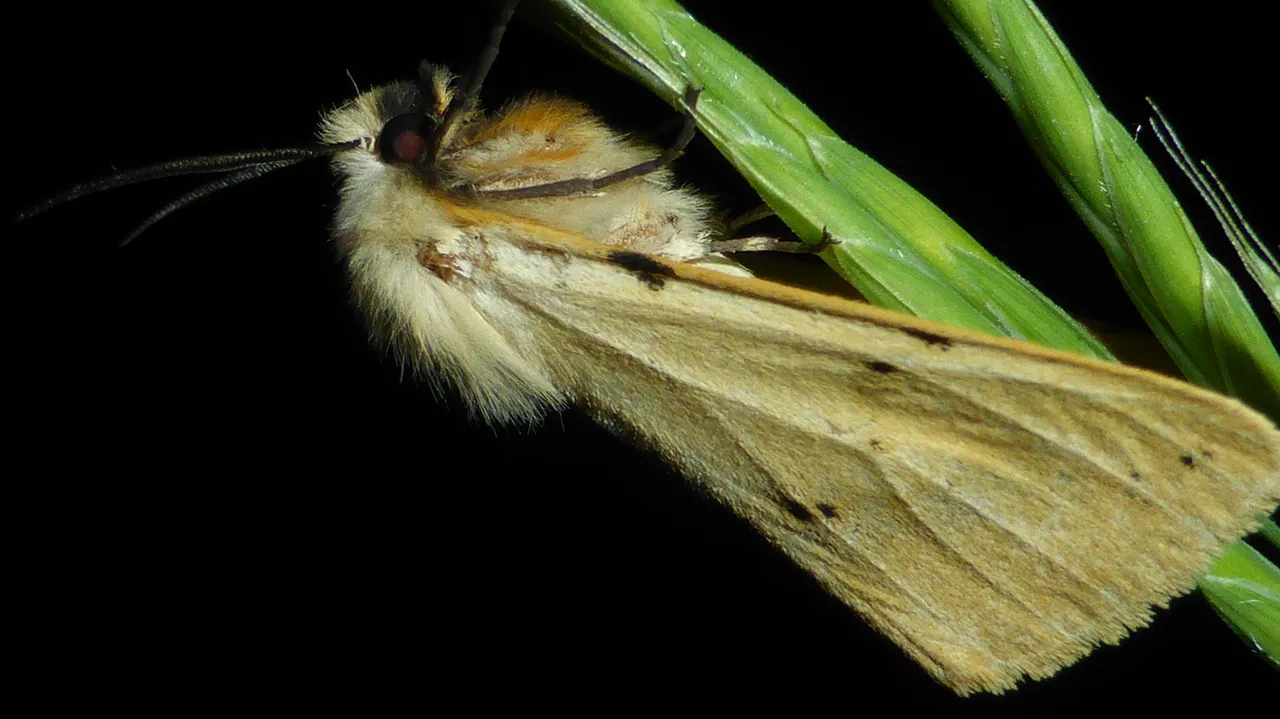Information about the species Spilosoma lutea (Buff ermine)
Informationen über die Art Spilosoma lutea (Gelber Fleckleibbär)
This week a species with quite a misleading non scientific german and english name was voted for the introduction. I am pretty sure that some of you expected to see a mammal species^^
Diese Woche wurde eine Art mit einem etwas irreführend nicht wissenschaftlichen deutschen und englischen Namen von euch zur Vorstellung gevotet. Ich bin mir ziemlich sicher das manche von euch eine Säugetierart erwartet haben^^
Intro
| Spilosoma lutea (Buff ermine) |
Spilosoma lutea (Gelber Fleckleibbär) |
| This species occurs in whole Europe and ranges over many parts of Asia until Japan. |
Diese Art kommt in ganz Europa vor und reicht über viele Teile von Asien bis nach Japan. |
| The genus Spilosoma was often added to the genus Spilarctia and then separated again. Therefore you can find Spilosoma lutea and Spilarctia lutea as a species name in literature, but Spilosoma lutea seems to be the name that is more up to date. |
Die Gattung Spilosoma wurde oft mit der Gattung Spilarctia zusammengefügt und dann wieder getrennt. Deswegen kann man in der Literatur den Artnamen Spilosoma lutea und Spilarctia lutea finden, aber Spilosoma lutea scheint der aktuellere Artnamen zu sein. |
| The caterpillars are brown in color and covered with reddish hairs. The wings of the adult moths are yellowish and have a very variable diagonal row of black dots on their forewings. |
Die Rauben sind braun gefärbt und mit rötlichen Haaren bedeckt. Die Flügel des adulten Nachtfalters sind gelblich und haben eine sehr variable schräge Reihe von schwarzen Flecken auf ihren Vorderflügeln. |
| The preferred habitats are forest margins, gardens and other warm and open landscapes, where the moths are active during nights from May till September and in favorable years also a second generation can fly around from August till September. |
Die bevorzugten Habitate sind Waldränder, Gärten und andere warme und offene Landschaften, wo die Nachtfalter während der Nächte von Mai bis Juli aktiv sind und in günstigen Jahren fliegt auch eine zweite Generation von August bis September herum. |
| In July the first caterpillars emerge and live on their feeding plants until they pupate in September and then overwinter in the earth before they develop into the moth. The caterpillars are polyphagous, which means that they feed on many different plant species. |
Im Juli schlüpfen die ersten Raupen und leben dann auf ihren Futterpflanzen bis sie sich im September verpuppen und dann in der Erde überwintern, bevor sie sich in den Falter entwickeln. Die Raupen sind polyphag, was bedeutet das sie viele verschiedene Pflanzenarten fressen. |
Sources/Quellen
https://fauna-eu.org/cdm_dataportal/taxon/367af4f0-ad8c-4752-b6d8-1b32a0960c6e, accessed on 29.04.2018.
http://www.lepiforum.de/lepiwiki_vgl.pl?Spilarctia_Lutea, accessed on 29.04.2018.
https://en.wikipedia.org/wiki/Buff_ermine, accessed on 29.04.2018.
https://de.wikipedia.org/wiki/Gelber_Fleckleibb%C3%A4r, accessed on 29.04.2018.
http://www.insects.ch/php/mhsCms/index.php?action=showItemDetail&NEWS_ID=946&NGR_ID=18&PHPSESSID=1jb6842ptubm6tm8cmcp95f751, accessed on 29.04.2018.
http://www.ukmoths.org.uk/species/spilosoma-lutea/, accessed on 29.04.2018.
All pictures are and will be photographed by myself
Alle Fotos sind und werden von mir selbst fotografiert

Which animal should I introduce in the next "learn & earn" episode?
Please vote your favorite from my 3 suggestions in the comments!
All 3 suggestions were drawn randomly from a growing pool of species
Welches Tier soll ich im nächsten "lerne & verdiene" Teil vorstellen?
Bitte votet euren Favoriten von meinen 3 Vorschlägen in den Kommentaren!
Alle 3 Vorschläge wurden zufällig aus einem wachsenden Pool an Arten gezogen
How to you earn from this post?
- Half of the SBD earned with this post will be distributed equally to all those who voted on this post and on one of my suggestions for the next episode (please vote just on one suggestion).
- Everyone who writes another interesting and well researched info about the introduced species in the comments (with source of the info) will earn 0.5 SBD.
- If you think that I identified the species (or genus) wrong and you can prove it somehow, you will get 5 SBD as a thank you.
I remain the right not to giveaway SBD to those votes or comments I deem as spam or are not compliant to the rules!
Wie verdient ihr mit diesem Post?
- Die Hälfte der von diesem Post verdienten SBD wird gleichmäßig zwischen all jenen verteilt die diesen Post und einen meiner Vorschläge für die nächste Episode upvoten (bitte nur einen Vorschlag voten).
- Jeder der eine weitere interessante und gut recherchierte Info über die vorgestellte Art in den Kommentaren schreibt (mit Quelle der Info) erhält 0.5 SBD.
- Wenn ihr denkt das ich die Art (oder Gattung) falsch bestimmt habe und ihr mir das irgendwie beweisen könnt, bekommt ihr 5 SBD als Dankeschön.
Ich behalte mir das Recht keine SBD an Votes oder Kommentare zu geben die ich für Spam halte oder die nicht regelkonform sind!
Previous learn & episodes / Bisherige lerne & verdiene Folgen
Lacerta viridis (European green lizard/Östliche Smaragdeidechse)
Salamandra salamandra (Fire salamander/Feuersalamander)
Calopteryx virgo (Beautiful demoiselle/Blauflügel-Prachtlibelle)
Cercopis sp. (a froghopper genus/eine Blutzikaden Gattung)
Lacerta agilis (Sand lizard/Zauneidechse)
Helix pomatia (Roman snail/Weinbergschnecke)
Capreolus capreolus (European roe deer/Europäisches Reh)
Natrix natrix (Grass snake/Ringelnatter)
Salamandra atra (Alpine salamander/Alpensalamander)
Pseudopanthera macularia (Speckled yellow/Pantherspanner)
Learn to know and appreciate the other species you are sharing this beautiful world with! ;)
Lernt die Arten mit denen ihr diese schöne Welt teilt kennen und schätzen! ;)




